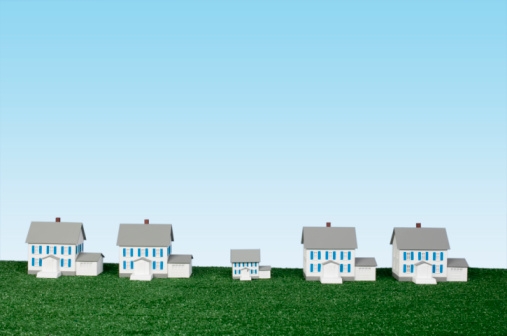Advertisement
Number of U.S. Homes for Sale Continues Downward Dip

According to the National Association of Realtors (NAR), existing-home sales improved in October while the number of homes on the market continued to decline. Total existing-home sales, which are completed transactions that include single-family, townhomes, condominiums and co-ops, rose 1.4 percent to a seasonally adjusted annual rate of 4.97 million in October from a downwardly revised 4.90 million in September, and are 13.5 percent above the 4.38 million unit level in October 2010.
“Home sales have been stuck in a narrow range despite several improving factors that generally lead to higher home sales such as job creation, rising rents and high affordability conditions," said Lawrence Yun, NAR chief economist. "Many people who are attempting to buy homes are thwarted in the process. A higher rate of contract failures has held back a sales recovery. Contract failures reported by NAR members jumped to 33 percent in October from 18 percent in September, and were only 8 percent a year ago, so we should be seeing stronger sales."
Contract failures are cancellations caused by declined mortgage applications, failures in loan underwriting from appraised values coming in below the negotiated price, or other problems including home inspections and employment losses.
“Other recent factors include disruption in the National Flood Insurance Program, and lower loan limits for conventional mortgages, which paradoxically force some of the most creditworthy consumers to pay unnecessarily higher interest rates,” Yun said.
According to Freddie Mac, the national average commitment rate for a 30-year, conventional, fixed-rate mortgage fell to a record low 4.07 percent in October from 4.11 percent in September; the rate was 4.23 percent in October 2010.
An ongoing positive trend NAR found is a steady decline in the number of homes on the market. Total housing inventory at the end of October fell 2.2 percent to 3.33 million existing homes available for sale, which represents an 8.0-month supply3 at the current sales pace, down from an 8.3-month supply in September. Inventories have been trending gradually down since setting a record of 4.58 million in July 2008.
The national median existing-home price4 for all housing types was $162,500 in October, which is 4.7 percent below October 2010. Distressed homes—foreclosures and short sales typically sold at deep discounts—slipped to 28 percent of sales in October from 30 percent in September (17 percent were foreclosures and 11 percent were short sales); they were 34 percent in October 2010.
“In some areas we’re hearing about shortages of foreclosure inventory in the lower price ranges with multiple bidding on the more desirable properties,” Yun said. “Realtors in such areas are calling for a faster process of getting foreclosure inventory into the market because they have ready buyers. In addition, extending credit to responsible investors would help to absorb inventory at an even faster pace, which would go a long way toward restoring market balance.”
All-cash sales accounted for 29 percent of purchases in October, little changed from 30 percent in September and 29 percent in October 2010; investors make up the bulk of cash transactions. Investors purchased 18 percent of homes in October, compared with 19 percent in September and 19 percent in October 2010. First-time buyers accounted for 34 percent of transactions in October, up from 32 percent in September; they were 32 percent in October 2010.
Single-family home sales increased 1.6 percent to a seasonally adjusted annual rate of 4.38 million in October from 4.31 million in September, and are 13.8 percent higher than the 3.85 million-unit pace one year ago. The median existing single-family home price was $161,600 in October, which is 5.8 percent below October 2010.
Existing condominium and co-op sales were unchanged at a seasonally adjusted annual rate of 590,000 in October but are 10.5 percent above the 534,000-unit level in October 2010. The median existing condo price5 was $160,300 in October, down 1.5 percent from a year ago.
Regionally, existing-home sales in the Northeast fell 5.1 percent to an annual level of 750,000 in October but are 1.4 percent above October 2010. The median price in the Northeast was $224,400, down 5.5 percent from a year ago. Existing-home sales in the Midwest rose 2.8 percent in October to a pace of 1.10 million and are 19.6 percent higher than October 2010. The median price in the Midwest was $132,800, which is 4.7 percent below a year ago. In the South, existing-home sales increased 2.1 percent to an annual level of 1.94 million in October and are 14.1 percent above a year ago. The median price in the South was $145,700, down 1.6 percent from October 2010. Existing-home sales in the West rose 4.4 percent to an annual pace of 1.19 million in October and are 15.5 percent higher than October 2010. The median price in the West was $207,500, which is 1.6 percent below a year ago.
About the author





